Abstract
OBJECTIVE: To assess the acute effects of single and repeated coronary artery occlusions, during percutaneous transluminal coronary angioplasty (PTCA), on left ventricular long axis function in patients with stable and unstable angina. DESIGN: Prospective examination of ventricular systolic and diastolic long axis function using M mode echocardiography and transmitral Doppler in patients with significant coronary artery stenosis and either stable or unstable angina, during routine PTCA. SETTING: A tertiary referral centre for heart disease with cardiac catheterisation and echocardiographic facilities. SUBJECTS: 36 patients, age (SD) 60 (8) years, with significant coronary artery disease undergoing PTCA (mean duration 100-130 seconds) to the left anterior descending coronary artery (LAD) in 18 patients, native LAD or its vein graft in eight, and right coronary artery in 10. Controls were 21 normal subjects, age 58 (11) years. RESULTS-AT BASELINE: in systole, total long axis excursion was reduced at septal, posterior, and right sites in patients with LAD disease, at right site in those with vein grafts, and at septal and right sites in patients with right coronary artery disease. Peak shortening rate was often reduced in all patients and onset of shortening delayed with respect to the Q wave in patients with LAD disease. In diastole, onset of lengthening was always delayed, peak lengthening rate reduced, and relative A wave amplitude increased in all patients. There was a consistent abnormal shortening of the long axis during the isovolumic relaxation period in the 14 patients with unstable angina, not seen in the others. Transmitral A wave velocity was also increased and the onset of E wave delayed with respect to A2. At first balloon inflation: the extent of pre-existing systolic and particularly diastolic abnormalities consistently increased in patients with LAD or right coronary artery occlusion. This was associated with further delay in the onset of the transmitral Doppler E wave as its peak velocity fell and E/A ratio increased. In unstable angina, balloon inflation caused minor changes only in systolic function and no change in diastolic function. At second balloon inflation: systolic changes were the same as with the first inflation, while diastolic changes were attenuated by 10-15%. CONCLUSIONS: In stable angina intracoronary balloon inflation aggravated pre-existing systolic and diastolic abnormalities in the territory of the occluded vessel, indicating the dependence of both on coronary flow. In unstable angina balloon inflation caused only minor deterioration in systolic function, and diastolic changes-including the characteristic abnormal shortening during isovolumic relaxation-were unaffected. Thus resting abnormalities of left ventricular function in unstable angina are effectively dissociated from acute changes in coronary flow. Overall, the severity of systolic disturbances was unaltered by a second balloon inflation, but diastolic disturbances were attenuated by 10-15%, compatible with ischaemic preconditioning or recruitment of collaterals.
Full text
PDF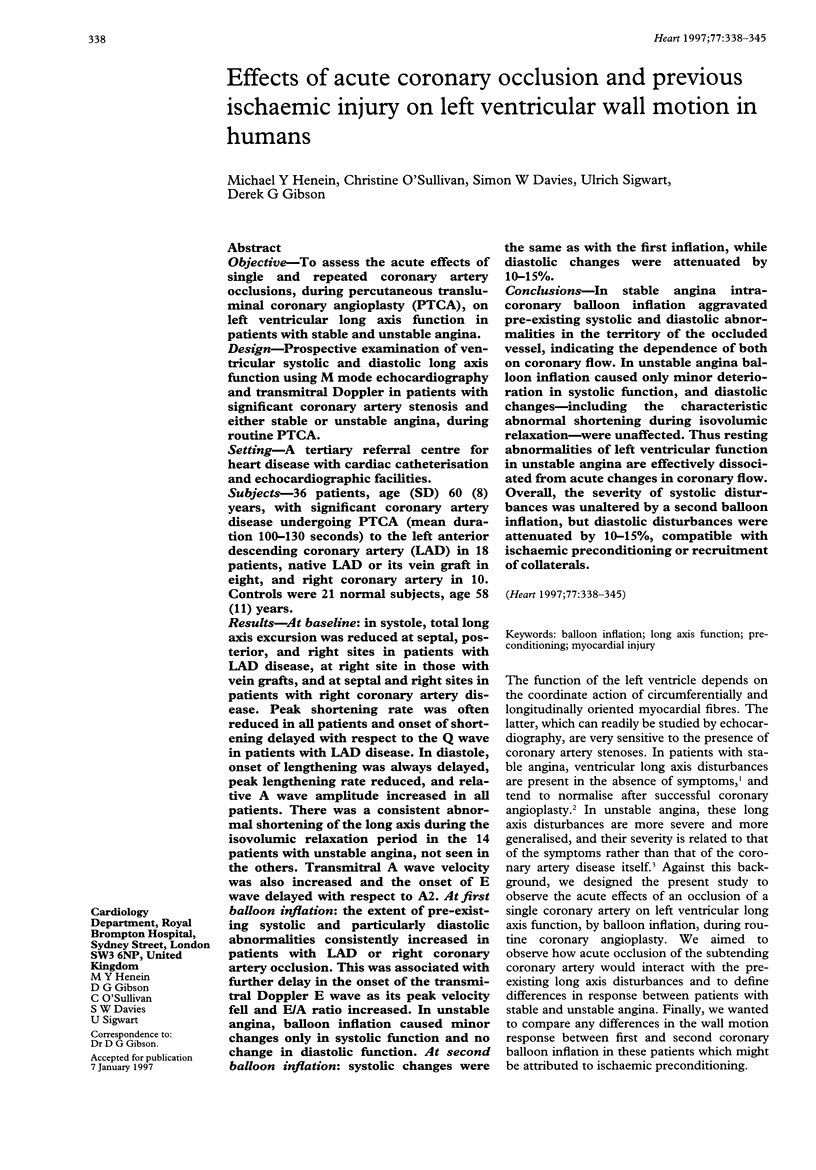
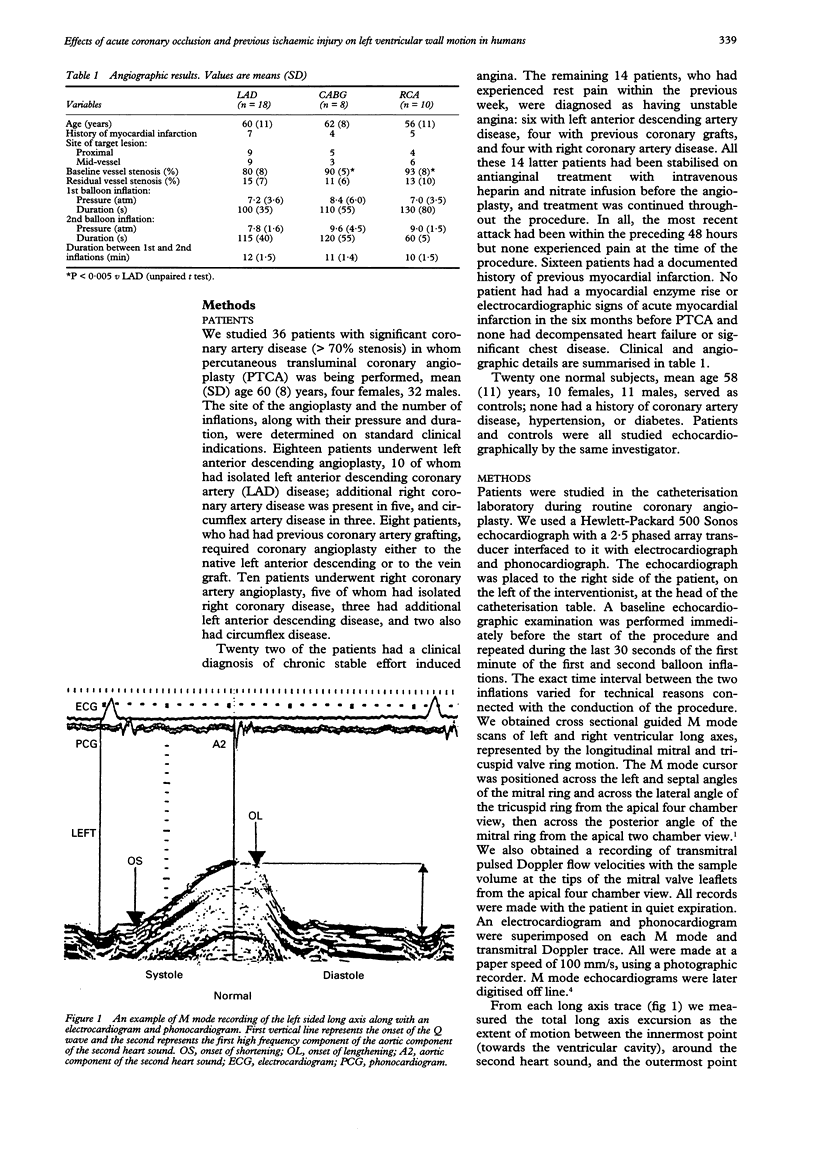
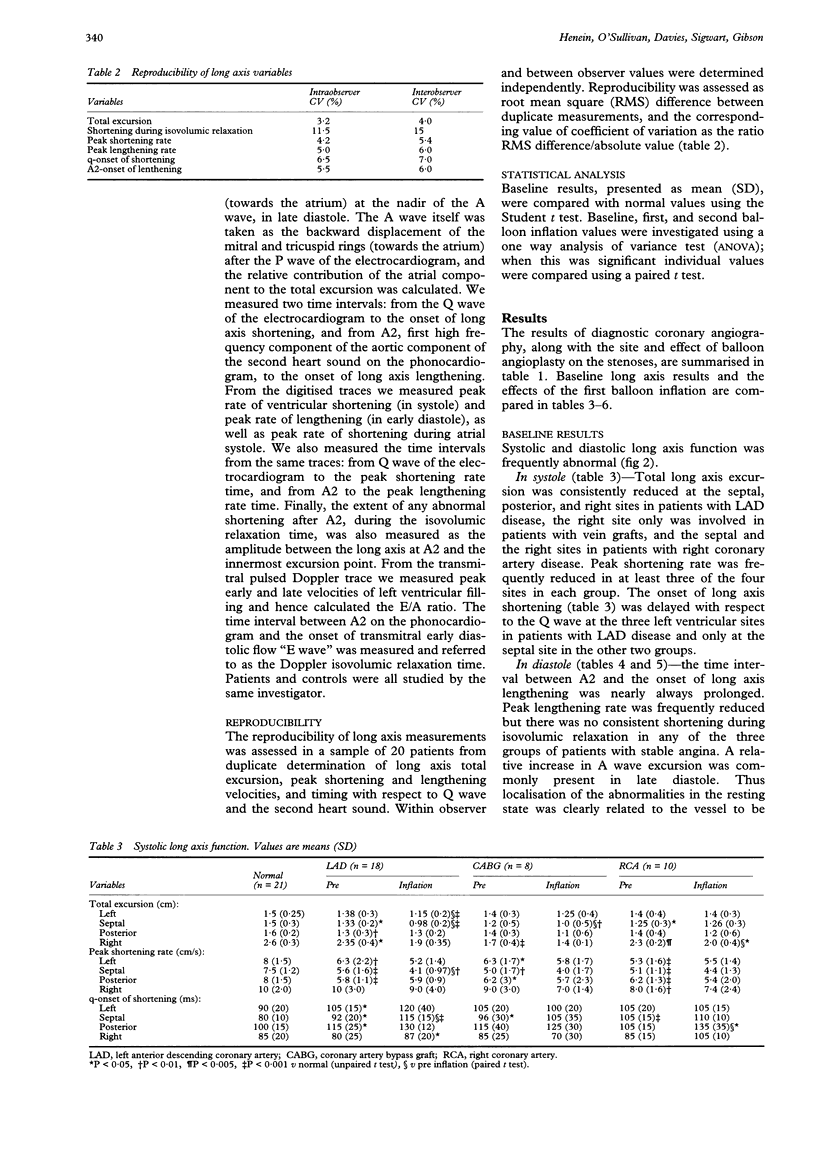

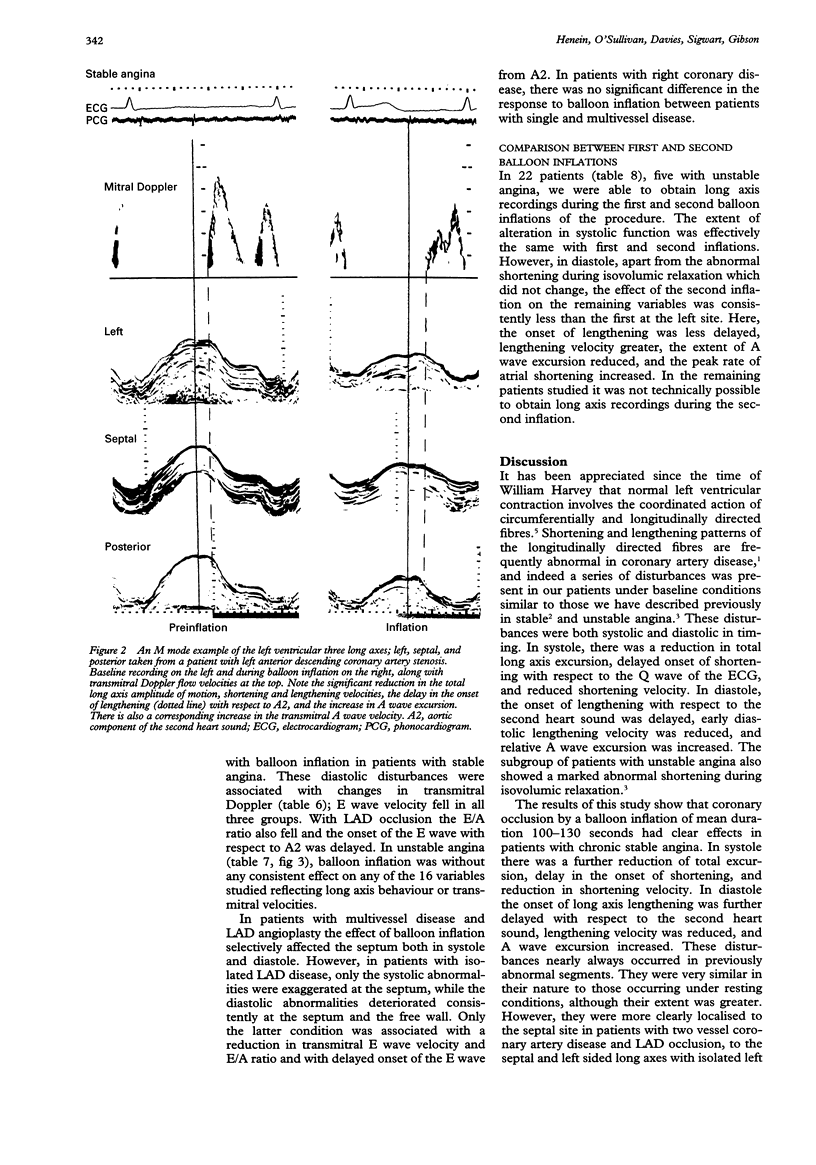
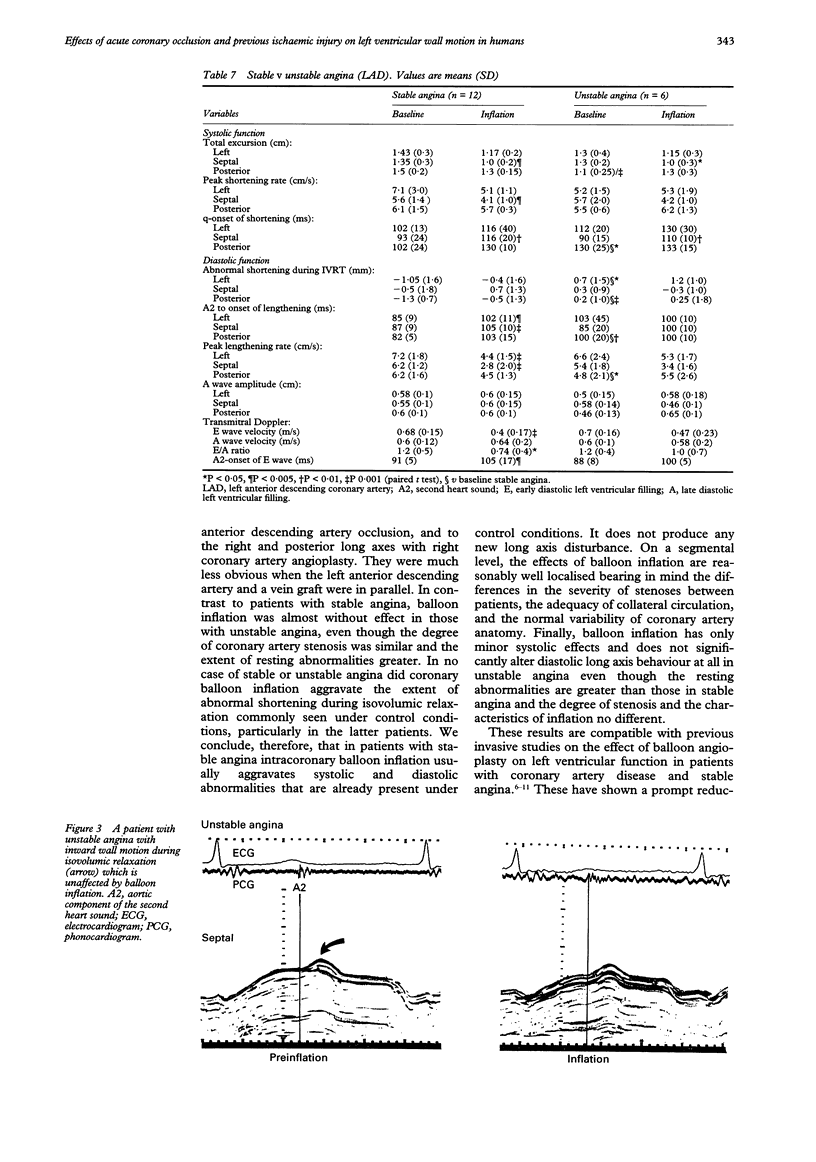
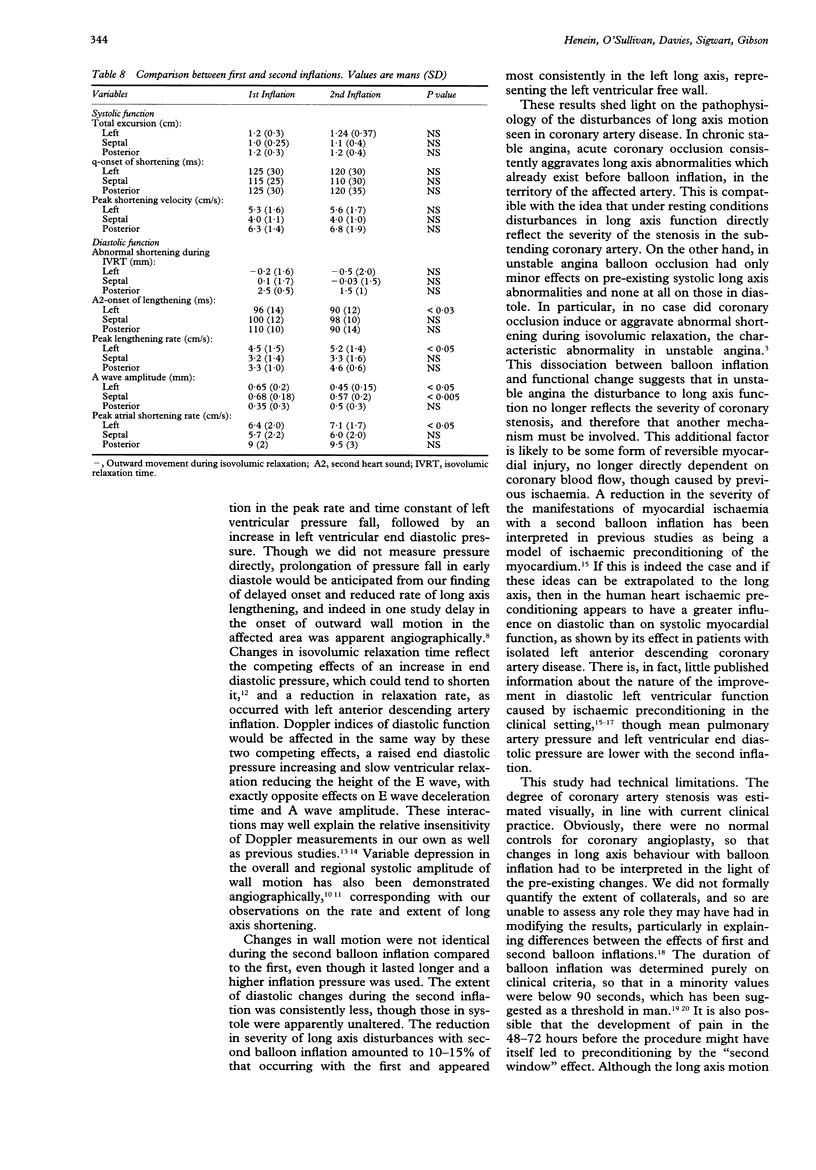
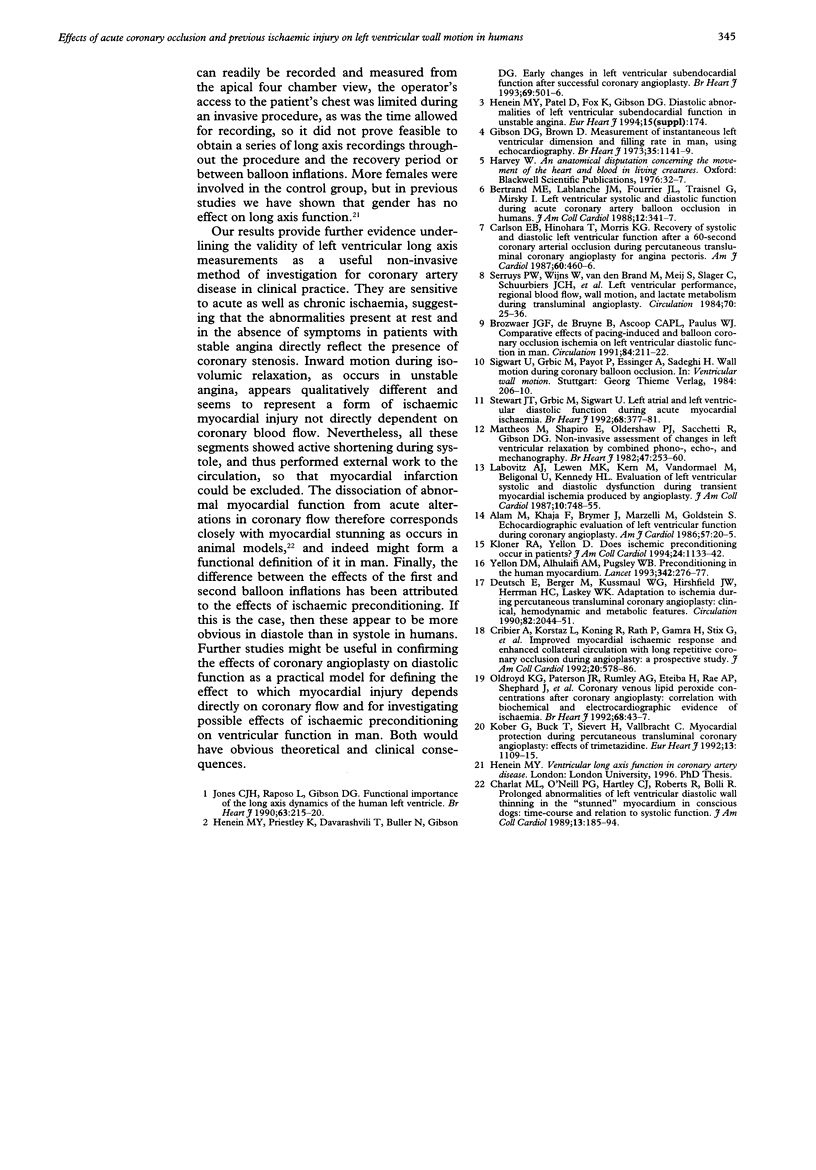
Selected References
These references are in PubMed. This may not be the complete list of references from this article.
- Bertrand M. E., Lablanche J. M., Fourrier J. L., Traisnel G., Mirsky I. Left ventricular systolic and diastolic function during acute coronary artery balloon occlusion in humans. J Am Coll Cardiol. 1988 Aug;12(2):341–347. doi: 10.1016/0735-1097(88)90403-2. [DOI] [PubMed] [Google Scholar]
- Bronzwaer J. G., de Bruyne B., Ascoop C. A., Paulus W. J. Comparative effects of pacing-induced and balloon coronary occlusion ischemia on left ventricular diastolic function in man. Circulation. 1991 Jul;84(1):211–222. doi: 10.1161/01.cir.84.1.211. [DOI] [PubMed] [Google Scholar]
- Carlson E. B., Hinohara T., Morris K. G. Recovery of systolic and diastolic left ventricular function after a 60-second coronary arterial occlusion during percutaneous transluminal coronary angioplasty for angina pectoris. Am J Cardiol. 1987 Sep 1;60(7):460–466. doi: 10.1016/0002-9149(87)90286-4. [DOI] [PubMed] [Google Scholar]
- Charlat M. L., O'Neill P. G., Hartley C. J., Roberts R., Bolli R. Prolonged abnormalities of left ventricular diastolic wall thinning in the "stunned" myocardium in conscious dogs: time course and relation to systolic function. J Am Coll Cardiol. 1989 Jan;13(1):185–194. doi: 10.1016/0735-1097(89)90569-x. [DOI] [PubMed] [Google Scholar]
- Cribier A., Korsatz L., Koning R., Rath P., Gamra H., Stix G., Merchant S., Chan C., Letac B. Improved myocardial ischemic response and enhanced collateral circulation with long repetitive coronary occlusion during angioplasty: a prospective study. J Am Coll Cardiol. 1992 Sep;20(3):578–586. doi: 10.1016/0735-1097(92)90011-b. [DOI] [PubMed] [Google Scholar]
- Deutsch E., Berger M., Kussmaul W. G., Hirshfeld J. W., Jr, Herrmann H. C., Laskey W. K. Adaptation to ischemia during percutaneous transluminal coronary angioplasty. Clinical, hemodynamic, and metabolic features. Circulation. 1990 Dec;82(6):2044–2051. doi: 10.1161/01.cir.82.6.2044. [DOI] [PubMed] [Google Scholar]
- Gibson D. G., Brown D. Measurement of instantaneous left ventricular dimension and filling rate in man, using echocardiography. Br Heart J. 1973 Nov;35(11):1141–1149. doi: 10.1136/hrt.35.11.1141. [DOI] [PMC free article] [PubMed] [Google Scholar]
- Henein M. Y., Priestley K., Davarashvili T., Buller N., Gibson D. G. Early changes in left ventricular subendocardial function after successful coronary angioplasty. Br Heart J. 1993 Jun;69(6):501–506. doi: 10.1136/hrt.69.6.501. [DOI] [PMC free article] [PubMed] [Google Scholar]
- Jones C. J., Raposo L., Gibson D. G. Functional importance of the long axis dynamics of the human left ventricle. Br Heart J. 1990 Apr;63(4):215–220. doi: 10.1136/hrt.63.4.215. [DOI] [PMC free article] [PubMed] [Google Scholar]
- Kloner R. A., Yellon D. Does ischemic preconditioning occur in patients? J Am Coll Cardiol. 1994 Oct;24(4):1133–1142. doi: 10.1016/0735-1097(94)90880-x. [DOI] [PubMed] [Google Scholar]
- Kober G., Buck T., Sievert H., Vallbracht C. Myocardial protection during percutaneous transluminal coronary angioplasty: effects of trimetazidine. Eur Heart J. 1992 Aug;13(8):1109–1115. doi: 10.1093/oxfordjournals.eurheartj.a060322. [DOI] [PubMed] [Google Scholar]
- Labovitz A. J., Lewen M. K., Kern M., Vandormael M., Deligonal U., Kennedy H. L. Evaluation of left ventricular systolic and diastolic dysfunction during transient myocardial ischemia produced by angioplasty. J Am Coll Cardiol. 1987 Oct;10(4):748–755. doi: 10.1016/s0735-1097(87)80266-8. [DOI] [PubMed] [Google Scholar]
- Mattheos M., Shapiro E., Oldershaw P. J., Sacchetti R., Gibson D. G. Non-invasive assessment of changes in left ventricular relaxation by combined phono-, echo-, and mechanocardiography. Br Heart J. 1982 Mar;47(3):253–260. doi: 10.1136/hrt.47.3.253. [DOI] [PMC free article] [PubMed] [Google Scholar]
- Oldroyd K. G., Paterson J. R., Rumley A. G., Eteiba H., Rae A. P., Shepherd J., Cobbe S. M., Hutton I. Coronary venous lipid peroxide concentrations after coronary angioplasty: correlation with biochemical and electrocardiographic evidence of myocardial ischaemia. Br Heart J. 1992 Jul;68(1):43–47. doi: 10.1136/hrt.68.7.43. [DOI] [PMC free article] [PubMed] [Google Scholar]
- Serruys P. W., Wijns W., van den Brand M., Meij S., Slager C., Schuurbiers J. C., Hugenholtz P. G., Brower R. W. Left ventricular performance, regional blood flow, wall motion, and lactate metabolism during transluminal angioplasty. Circulation. 1984 Jul;70(1):25–36. doi: 10.1161/01.cir.70.1.25. [DOI] [PubMed] [Google Scholar]
- Stewart J. T., Grbic M., Sigwart U. Left atrial and left ventricular diastolic function during acute myocardial ischaemia. Br Heart J. 1992 Oct;68(4):377–381. doi: 10.1136/hrt.68.10.377. [DOI] [PMC free article] [PubMed] [Google Scholar]
- Yellon D. M., Alkhulaifi A. M., Pugsley W. B. Preconditioning the human myocardium. Lancet. 1993 Jul 31;342(8866):276–277. doi: 10.1016/0140-6736(93)91819-8. [DOI] [PubMed] [Google Scholar]


